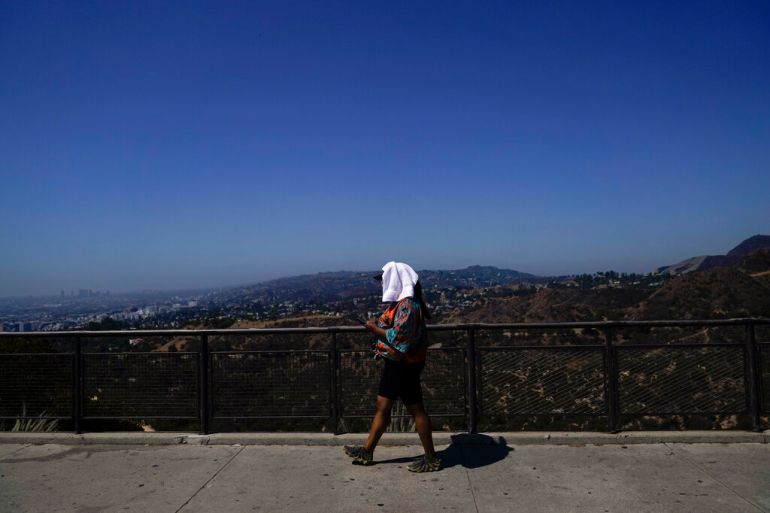Heatwave pushes California’s energy grid to its limits
Extreme heat prompts authorities to urge California residents to cut down electricity usage amid power outage threat.

California is facing the possibility of blackouts as a brutal heatwave pushes demand on the western US state’s energy grid beyond previous records, prompting authorities to urge residents to limit their electricity usage.
State energy officials said the electrical load on Tuesday afternoon could top 51,000 megawatts, the highest demand the state has ever seen.
Keep reading
list of 3 itemsWhat’s behind the heatwaves impacting the United States?
How climate change drives heatwaves and wildfires
Elliot Mainzer, president of California Independent System Operator (ISO), which runs the state’s electrical grid, said it has “entered the most intense phase of this heatwave” and warned residents that “blackouts, rolling, rotating outages are a possibility”.
Mainzer added that it was “absolutely essential” for people and businesses to conserve power.
The heatwave has unleashed extreme heat across the Pacific coast state, straining infrastructure and highlighting the challenges that extreme weather — worsened by the climate crisis — will pose to governments and people as they struggle to adapt.
ISO has urged residents to limit power use in the late afternoon and early evening as the state’s vast supply of solar-generated electricity decreases.
Oppressive heat with the potential for dozens of record high temperatures persists across the West. Learn how to keep your family safe at https://t.co/Ynl3VCdFFD pic.twitter.com/IO2MwZQId7
— National Weather Service (@NWS) September 6, 2022
Along with some power imported from out of state, California’s energy grid mostly runs on a combination of solar power and natural gas during the day.
But solar power begins to fall off in the late afternoon and into the evening, and ageing natural gas plants that the state relies on for backup become less reliable in hot weather.
The National Weather Service has predicted highs between 37.7C and 46.1C (100F and 115F) across inland California, with temperatures hitting between 26.6C and 37.2C (80F and 99F) closer to the more temperate coast.
Several hundred thousand Californians lost power in rolling blackouts in August 2020 amid hot weather, but the state was able to avoid a similar situation last year.
Governor Gavin Newsom has signed legislation that could allow California’s last nuclear plant to stay open beyond its planned 2025 closure to make more power available.
“We have proclaimed a State of Emergency to increase energy production & reduce demand,” the governor’s office said in a tweet last week. “As we address the immediate crisis, we must end dependence on fossil fuels that destroy the climate & make extreme heat more common.”
The western US heatwave is straining CA's energy grid.
We have proclaimed a State of Emergency to increase energy production & reduce demand.
As we address the immediate crisis, we must end dependence on fossil fuels that destroy the climate & make extreme heat more common. pic.twitter.com/onuO1Burxf
— Office of the Governor of California (@CAgovernor) August 31, 2022
The scorching temperatures have also heightened the risk of wildfires in what is already a highly combustible state known for record-breaking blazes.
The state’s fire season has been relatively mild compared with previous years, but authorities are wary entering September, one of the months that typically sees the most prolific levels of fire activity.
Four deaths were reported over the previous weekend as some 4,400 firefighters battled 14 large fires around the state, with 45 new blazes breaking out on Sunday alone, Anale Burlew, a deputy chief with the California Department of Forestry and Fire Protection, told The Associated Press news agency.
In southern California, the intersecting threats were fully on display: firefighters struggled to work in the crippling heat, and several were hospitalised for heat-related illnesses.
The weather could also enhance the possibility of lightning strikes, a common cause of fire ignition.
The threat of extreme heat will only continue to grow, according to experts.
Scientists say climate change has made the West warmer and drier in the last 30 years and will continue to make extreme weather and wildfires more common and destructive.